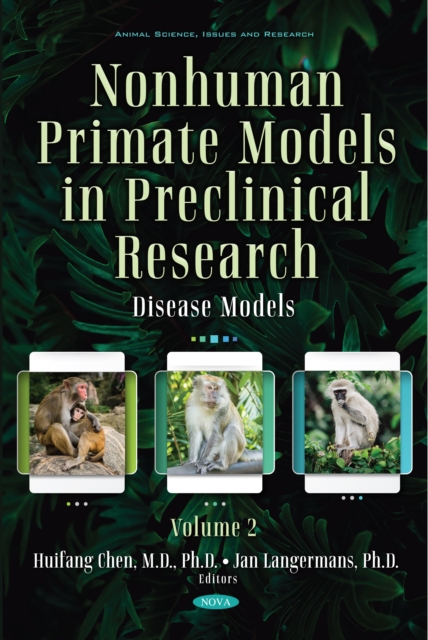
Nonhuman Primate Models in Preclinical Research. Volume 2: Disease Models PDF
Edited by Huifang Chen
Part of the Animal Science, Issues and Research series
Description
Despite many encouraging developments in the field of animal-free technologies, well-defined animal models are still needed to study fundamental properties of human diseases and to develop new prophylactic and therapeutic treatments against human diseases.
Non-human primates (NHP) make up only a small, but important, part of the total number of animals used in biomedical and preclinical research.
Due to their close phylogenetic relationship and the shared susceptibility to many human diseases, NHP can provide important research models to study these diseases and, as such, play a critical role in the advancement of various areas in the medical field.
Studies in NHP have contributed to our understanding of various diseases and fundamental biological phenomena and they continue to be important in the development of new therapies, treatments, drugs and vaccines.
Moreover, NHP models also contribute to our general knowledge of the processes that underlie non-disease and disease conditions.
Important areas where NHP can provide important information include (emerging) infectious diseases, organ transplantation, neurological and aging-related disorders.
Although not covered in this book due to time constraints, the need for, and benefits of, NHP models has been demonstrated most recently in the SARS-CoV-2 pandemic.
The present book is the second of two volumes and covers important disease areas where NHP are used as model species.
This volume includes different chapters on NHP models in infectious diseases, aging, neurodegenerative disorders, organ transplantation and cancer.
Information
-
Download - Immediately Available
- Format:PDF
- Pages:368 pages
- Publisher:Nova Science Publishers, Inc.
- Publication Date:15/07/2021
- Category:
- ISBN:9781536199314
Information
-
Download - Immediately Available
- Format:PDF
- Pages:368 pages
- Publisher:Nova Science Publishers, Inc.
- Publication Date:15/07/2021
- Category:
- ISBN:9781536199314






